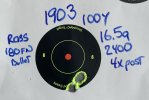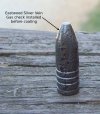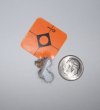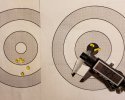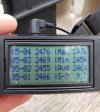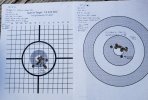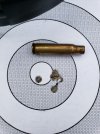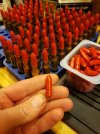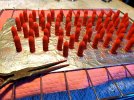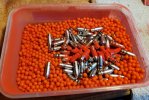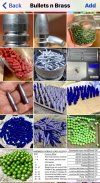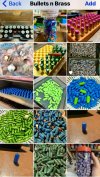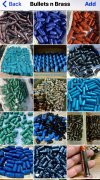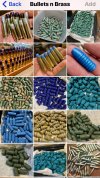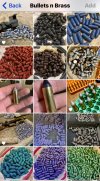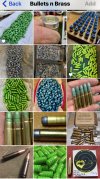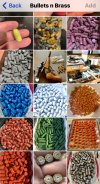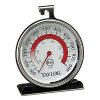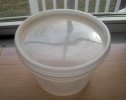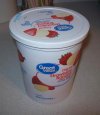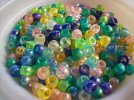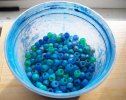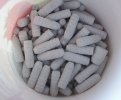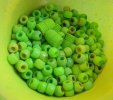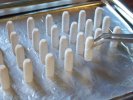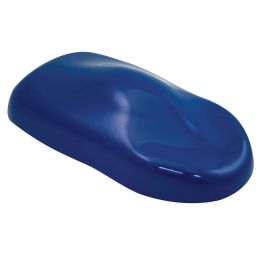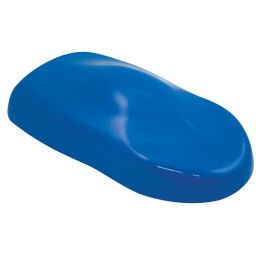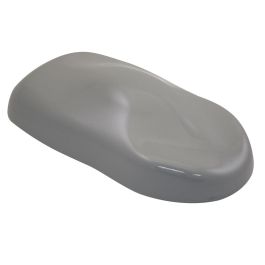Not everything is equal in powder coating.
Powder Coating creates a Polymer coating/shell around the cast boolit
.....a) it helps protect the boolit from the barrel
.....b) it works as a lubricant between the boolit and the barrel
.....c) it protects the user (and user's kids) from the lead
Different atmospheric conditions can limit static or dampen the powder.
1) the powder must be kept dry ----I use double zipper bags in the NW where we get a lot of rain, store my powder in a garage with a gas furnace and WH
2) the boolits must be kept clean --- IF I'm not coating the boolits right away I put them in plastic zipper bags --- NEVER QUENCH before PCing!!!
.....a) baking the boolits will take most of the hardness you gain by quenching out of the boolit
.....b) quenching is a good way to contaminate the boolits so the PC won't stick well
.....c) quenching after PCing gives good results
.....d) touching the boolit with oily hands can/will affect the coating --- wear nitrile/plastic gloves or use a clean spoon or ? to move the boolits
PC can be dried out in an oven KEEP the temperature below 150° F (leaving the container open in an airconditioned room works) IF the PC is lumpy after drying it will quickly become powder again when you start swirl/shaking [I Rarely ever shake the container when PCing -- the containers don't last long when I do and just swirling gives me good results
3) the oven temperature must be checked with an oven thermometer (or 2) and the dial adjusted to where the thermometers read 400°
.....a) the oven temperatures will change with the surrounding air temperature due to location and type of sensor they use
.....b) toaster ovens work but only for smaller loads and have a tendency to have hot spots (some of the boolits can/will melt)
.....c) conventions ovens have been proven best because they have a circulating and the evenly heats all the boolits ---you can safely bake full trays of boolits
4) If the air/atmosphere is really damp you may need to pre-warm the boolits --- I use an oven set at 150° F or you can set a pan of boolits on to of your hot oven
.....a) the boolits must not be hotter than you can comfortably touch with bare hands or you can get PC clumping-- starting to cure
5) not all PC needs BB's/poly pellets to work --- this is a trial and error thing
6) polyester (usually TGIC) PC works best for me, I get better results with higher gloss powders
7) white/light colors generally don't cover well but adding a little of another color usually helps
8) COATING BOOLITS:
.....A) BOWLS
..........1) coating bowls/containers need to be plastic #5 or plastic #2
..........2) larger diameter bowls allow you to swirl/build up static faster thus cool whip bowls do such a good job
..........3) lids: if the bowl doesn't have a screw-on lid make sure you hang onto it or the lid will come open
.....B)STATIC BUILDING MEDIA: Normally cover the bottom of small bowls with 2 layers large bowls with 1 layer
..........1) ASBB (Air Soft BB's) black BB's are proven to work I've found camouflaged BB's that work also. It has to do with the hardness, what the BB's are made out of as to how well they help build static. even nonstatic building BB's will help even out the coating
..........2) Poly pellets normally black or white, haven't found any poly pellets that didn't help
.....C) Boolits:
..........1) use a minimum of 12-15 boolits -- enough to build up static
..........2) maximum no more than 2-3 layers deep in your bowl
.....D) Powder: This will vary on bowl size and number of boolits being coated
..........1)Ziploc Twist 'n Loc, after the BB's are coated, no more than 1 teaspoon per batch see how much PC is left in the bottom of the bowl after coating.
..........2) Cool Whip after the BB's are coated 1-2 teaspoons per batch see how much PC is left in the bottom of the bowl after coating.
..........3) Too much PC will prevent good static build-up
..........4) Too little PC will result in thin/spotty coating --- it's easy to add a little more and swirl a little longer
.....E) blending/mixing different PC is not like dealing with paint, white and black don't always make grey more often you get spotted/splotchy boolits
a) blending/mixing a little good PC with a bad PC often makes the bad PC work
b) blending/mixing multiple PCs can give you amazing results but the results will change with each batch you coat
c) some powders stick faster/better than others, the blend color will be heavier with that color to begin with then taper of when the color is used up in the bowl
.....F) SWIRLING: Screw or hold the lid tight and swirl the bowl holding it flat to verticle and back to flat, continue until all boolit are coated
.....G) preparing coated boolits:
..........1) REMOVE
ALL EXCESS POWDER
.................a) Sift PC/boolits/BB's in a colander with something to catch the BB's and powder when they fall through the colander removing all excess PC
........................1) after all the PC/BB's are sifted off pick up the boolits with tweezers or fingers wearing surgical gloves (dipped in pc first to prevent sticking)
.................b) Pick up- dump PC'd boolits in a tray or? pick them up with tweezers, tap the tweezer on the side of a container to remove all excess PC
.....H) preparing to bake: Use a pan lined with non-stick paper/foil/bake mats or screen (1/4 hardware cloth)/wire basket (office supply)
..........a) stand short fat boolits up on their bases using finger or tweezer method
..........b) place taller boolits in silicone ice cube trays or use a metal grid to keep them from falling over
..........c) Dump method dump the sifted boolits in screen (1/4 hardware cloth)/wire basket (office supply) [this doesn't work well with all PC's you can get bad sticking
9) Baking PC the manufacturer states Bake for XX minutes at XXX° AFTER this condition exists
.....a) bake for XX minutes AFTER the boolits have reached XXX°
.....b) bake for XX minutes AFTER the PC starts to flow on the boolits
.....c) PC will look good after it flows and may pass the smash test BUT unless bakes to factory specifications IT IS NOT FULLY CURED
*****I have found that baking the coated boolits in an oven preheated to 400° for 25 minutes meets or exceeds all manufacturers requirements*****
10) Testing PC for adhesion/sticking using a smooth-faced hammer
.....a) flatten the PC'd cool boolit to 1/2 its original height seeing if any PC cracks or flakes off
.....b) hammer the PC'd cool boolit into a cube seeing if any PC cracks or flakes off
.....c) just because the PC passes the hammer test doesn't mean its fully cured, just that it is sticking well
11 SIZING
.....a) PC'd usually boolits size easily; if not, a little spray case lube can be used
.....b) IF PC is scraped off when sizing polish the entrance to your sizing die
..........1) with fine sandpaper made into a cone with the grit on the outside
..........2) with a Dremel tool, a felt boolit shaped polisher and some fine polishing compound --- I like Flitz
.....c)*** I like running a felt polisher in the sizing die for a few seconds to smooth the machine marks and make sizing easier
12 LOADING:
.....a) PC is normally loaded to regular cast boolit loads
.....b) GC usually aren't needed with PC's boolits until you reach 1600 - 2100 fps depending on the gun, powder, and boolit
.....c) PC'd boolits can work with a softer alloy and be pushed faster/harder than regular lubed boolits
***I like using different colored boolits to designate different diameters or powder charges***


